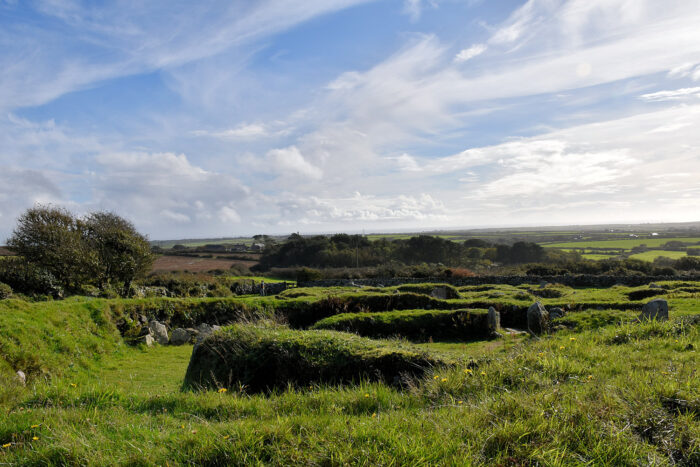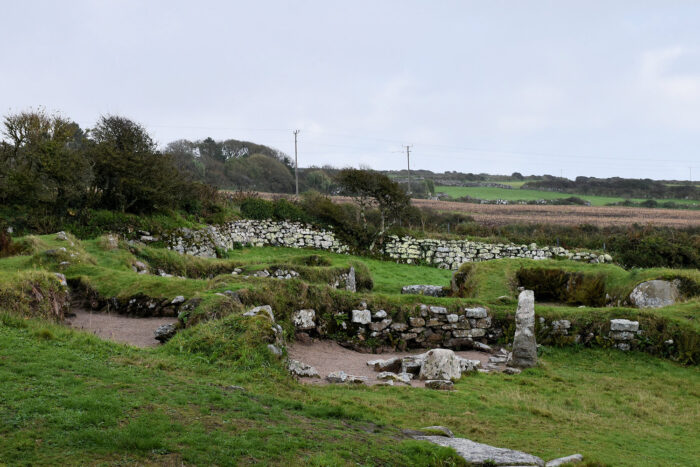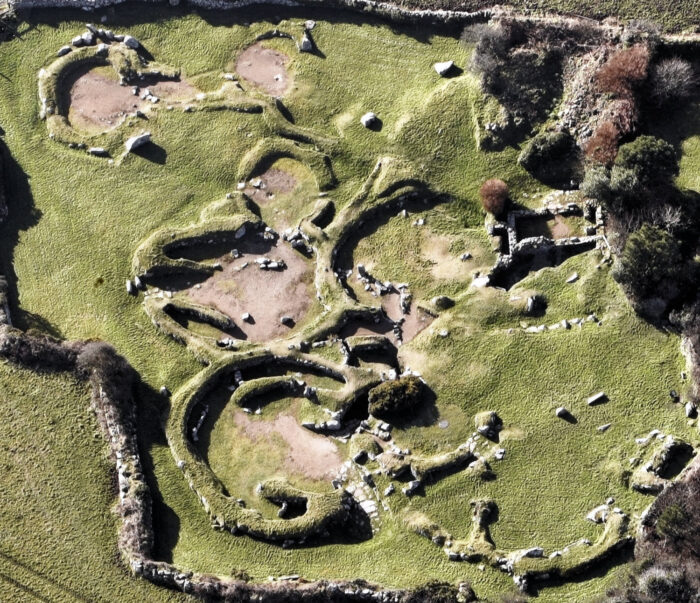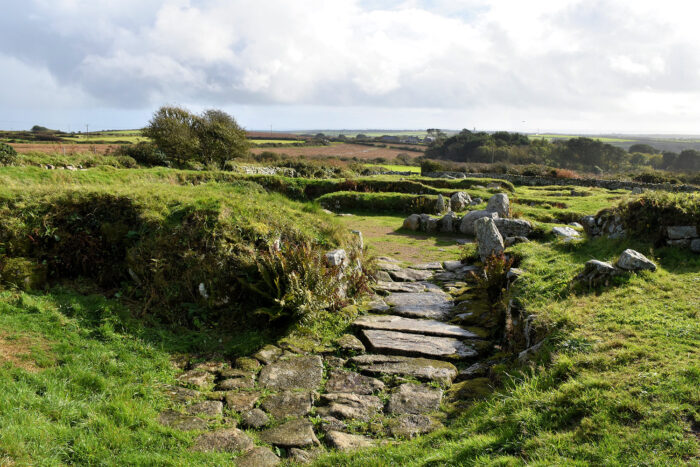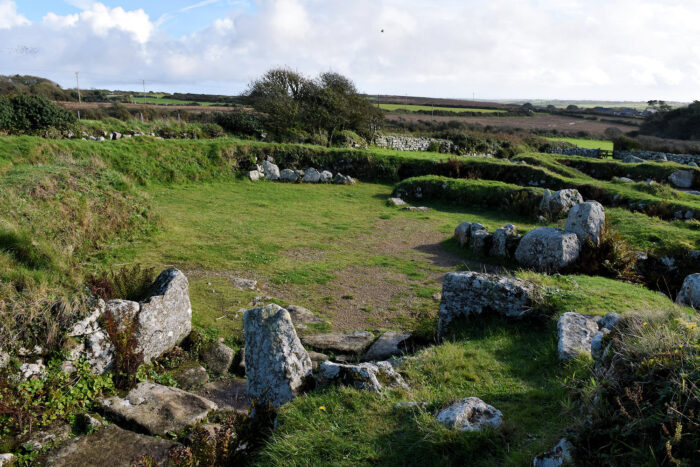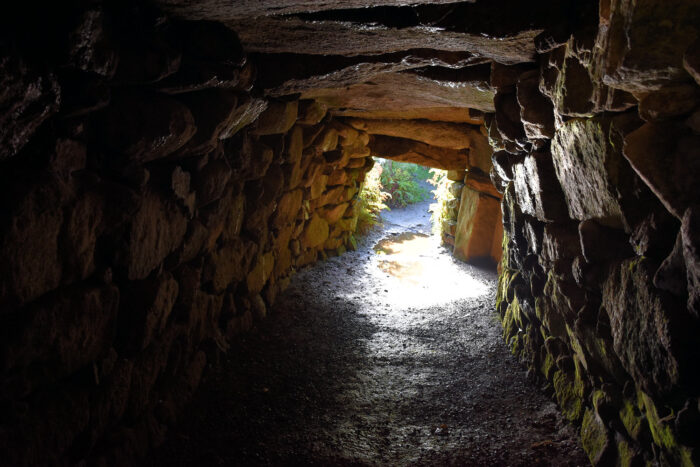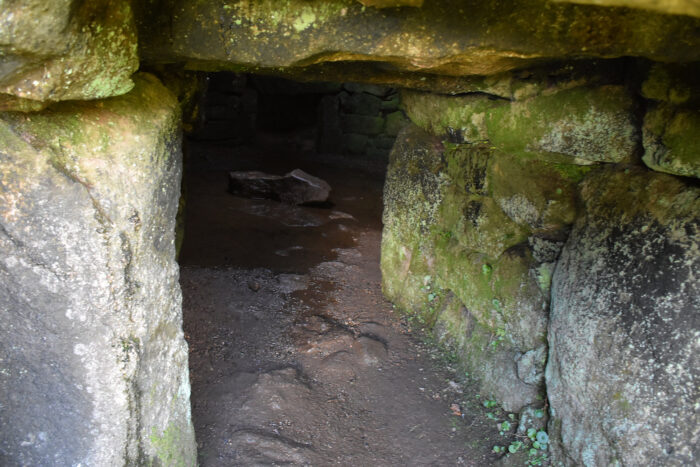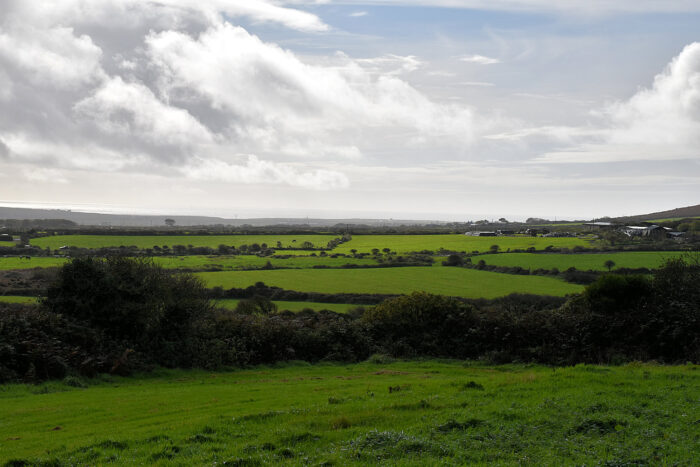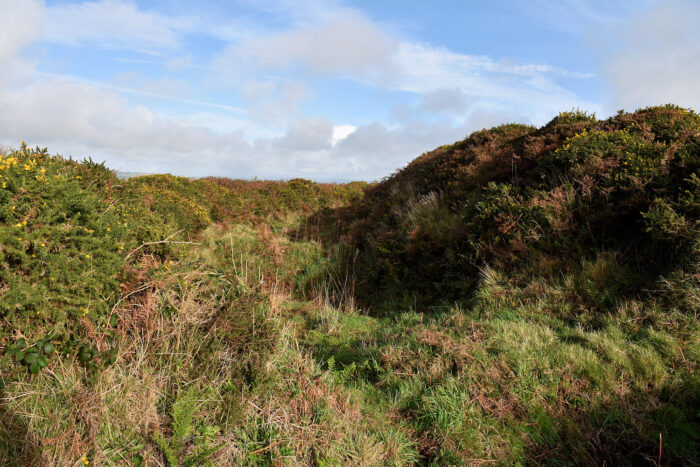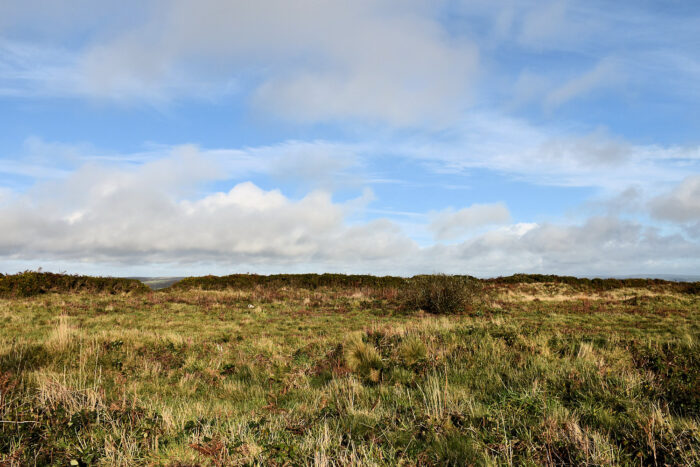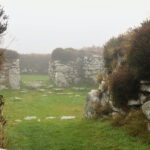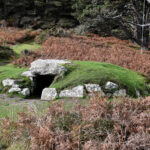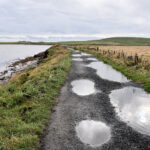Another Iron Age village! This is Carn Euny, occupied from the mid-Iron Age to the end of the Roman Period.
The earliest houses here were round houses. (They’re the houses usually shown on movies/TV set at this time.) Later came courtyard houses. Similar to the houses at Chysauster but smaller and interconnected rather than free standing.
This aerial photo is from a panel at the site. It gives you an idea of the layout. The cottage on the right an 18th addition. On the house at the bottom you can easily see the round outer walls with some internal walls.
Here is it’s entrance!
This house over the back is in the middle of the aerial phots. You’re looking over the back wall, towards the entrance and the “rooms” on either side.
Another entrance to the left with flag stones and uprights each side of the doorway, then the central open space and smaller rooms towards the back.
There is also a fogou! A fogou is one of those “we don’t know what it’s for but it’s cool!” things. It has similarities to the earth houses of Orkney. It has a tunnel
and a round chamber (which has apparently obtained a roof in recent years).
That’s the view when there’s no fog 🙂
As with Chysauster, there’s a nearby hill fort (defend settlement), Caer Bran. These don’t photograph very well. Think walls with a ditch running between them
surrounding a flat hilltop site.

Also near the village, but in the other direction, is the medieval St Euny’s Well.
At Chapel Uny will be found a copious spring of as clear water as was ever seen. The only remains that can be identified^ as having belonged to its ancient chapel, are a few dressed stones near the well. These, from their shape, would seem tO have formed part of an arched door or window. . . . [A] few years ago, it was resorted to on the first three Wednesdays in May by scores of persons who had great faith in the virtue of its waters, which were considered very efficacious for curing most diseases incidental to childhood, and many ricketty babes are still bathed there at the stated times when the spring is believed to possess the most healing powers.
“Traditions and hearthside stories of West Cornwall”, William Bottrell, 1873
